
With the federal minimum wage at the same level for nearly a decade, many states, cities, and counties have passed laws to set the local minimum wage laws at a higher level than the federal standard. The last time the federal government acted to increase the national wage floor was the passage of the Fair Minimum Wage Act of 2007. The law increased the national minimum hourly wage from $5.15 to $7.25, with the last increase taking place in July 2009.
In some cases, lawmakers implemented rules to tie the minimum wage set by law to local inflation. In other cases, voters supported ballot measures to raise minimum wages incrementally until a specific target was hit. High-cost cities like Seattle have taken the lead in implementing these increases, while lawmakers in some states, like Texas, are comfortable letting Washington D.C. set the minimum wage.
Meanwhile, the debate over the minimum wage rages on and conjures all-too-familiar arguments that are repeated year after year. Those in favor of higher minimum wage point to the ever increasing wage inequality and that the current wage is often insufficient as a living wage. Those who oppose a higher minimum wage believe that a minimum wage set by law rather than market forces can harm low-income workers as well as businesses as hiring decisions could be forced by payroll expenses more than need.
With no national consensus, the result has been a patchwork of different local minimum wage laws and annual minimum wage adjustments spread out across dozens of jurisdictions.
As of the start of 2019, 19 states, 21 cities, and one county have implemented increases to their local minimum hourly wages.
Click here to see the 41 places with a higher minimum wage this year.
24/7 Wall St. reviewed a report from the National Employment Law Project outlining the dozens of states, cities, and counties that raised local minimum hourly wages as of Jan. 1. We also looked at state and municipal documents to determine how these jurisdictions raised their hourly wage floors, such as by routine inflation-indexed wage hikes or through one-time incremental raises mandated by voter ballot initiatives or by lawmakers.

1. Alaska
> New minimum wage: $9.89
> Effective date: 1/1/2019
> Former minimum wage: $9.84
Alaska added 5 cents to its minimum hourly wage at the start of the year. In 2014, voters supported a ballot initiative to raise the state’s minimum wage by a dollar in both 2015 and 2016. Starting last year, the law also requires the minimum wage to be adjusted annually based on inflation.
[in-text-ad]
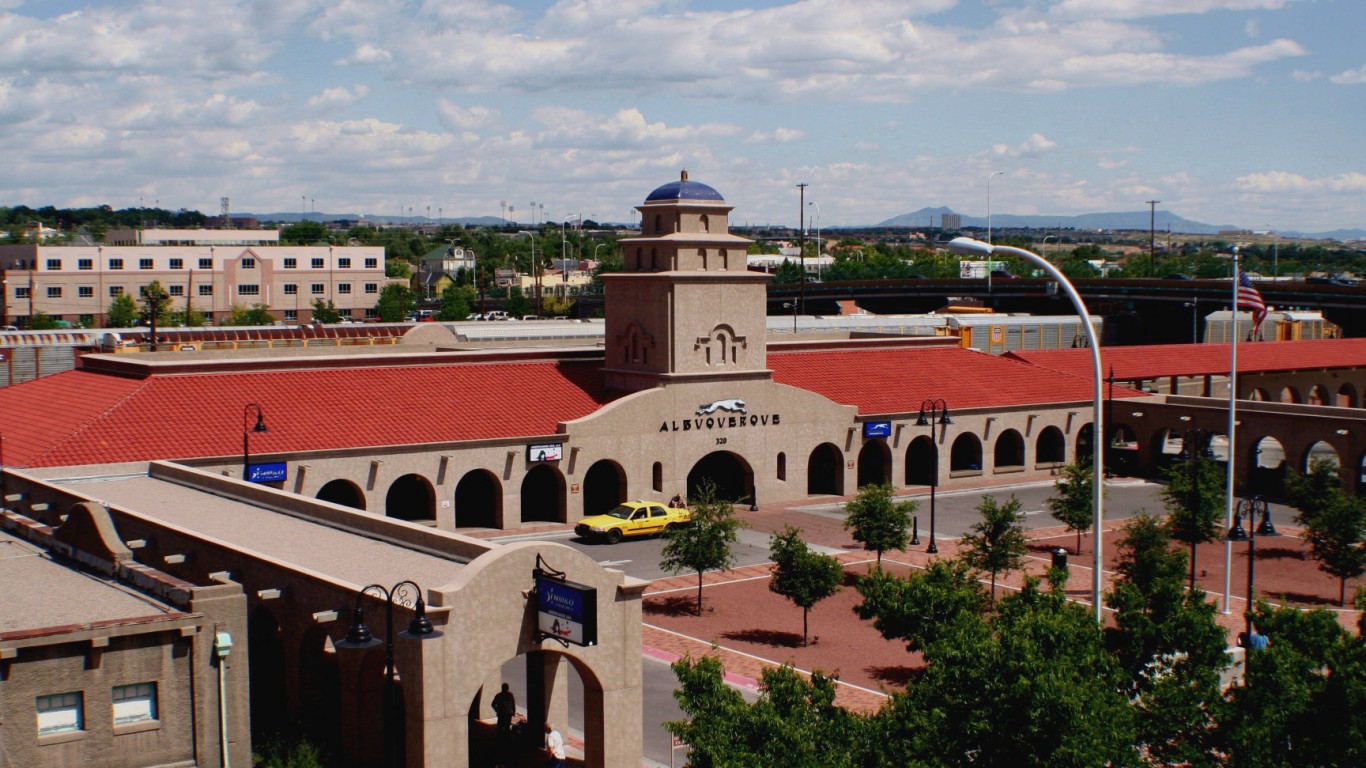
2. Albuquerque, New Mexico
> New minimum wage: $9.20
> Effective date: 1/1/2019
> Former minimum wage: $8.95
The city raised its minimum hourly wage to $9.20, or $8.20 for employees who receive certain benefits, such as health care of child care, from their employers, up from $8.95 and $7.95, respectively. Albuquerque also raised its lower minimum wage for qualified tipped workers to $5.50 from $5.35.

3. Arizona
> New minimum wage: $11.00
> Effective date: 1/1/2019
> Former minimum wage: $10.50
In the third of four annual minimum hourly wage increases mandated by Arizona voters in 2016, the state added 50 cents to the minimum wage on Jan. 1, and it is scheduled to add $1.00 to that at the start of 2020. Following the 2020 bump, minimum wage in Arizona will by adjusted for inflation annually.

4. Arkansas
> New minimum wage: $9.25
> Effective date: 1/1/2019
> Former minimum wage: $8.50
Arkansas voters approved last year a ballot initiative to incrementally raise the state’s minimum hourly wage to $11.00 by the start of 2021. The first of the three scheduled incremental raises went into effect at the start of the year.
[in-text-ad-2]

5. Belmont, California
> New minimum wage: $13.50
> Effective date: 1/1/2019
> Former minimum wage: $12.50
Belmont is one of 13 California cities to raise its local minimum hourly wage. On Jan. 1, the minimum wage in Belmont increased from $12.50 an hour to $13.50 an hour.
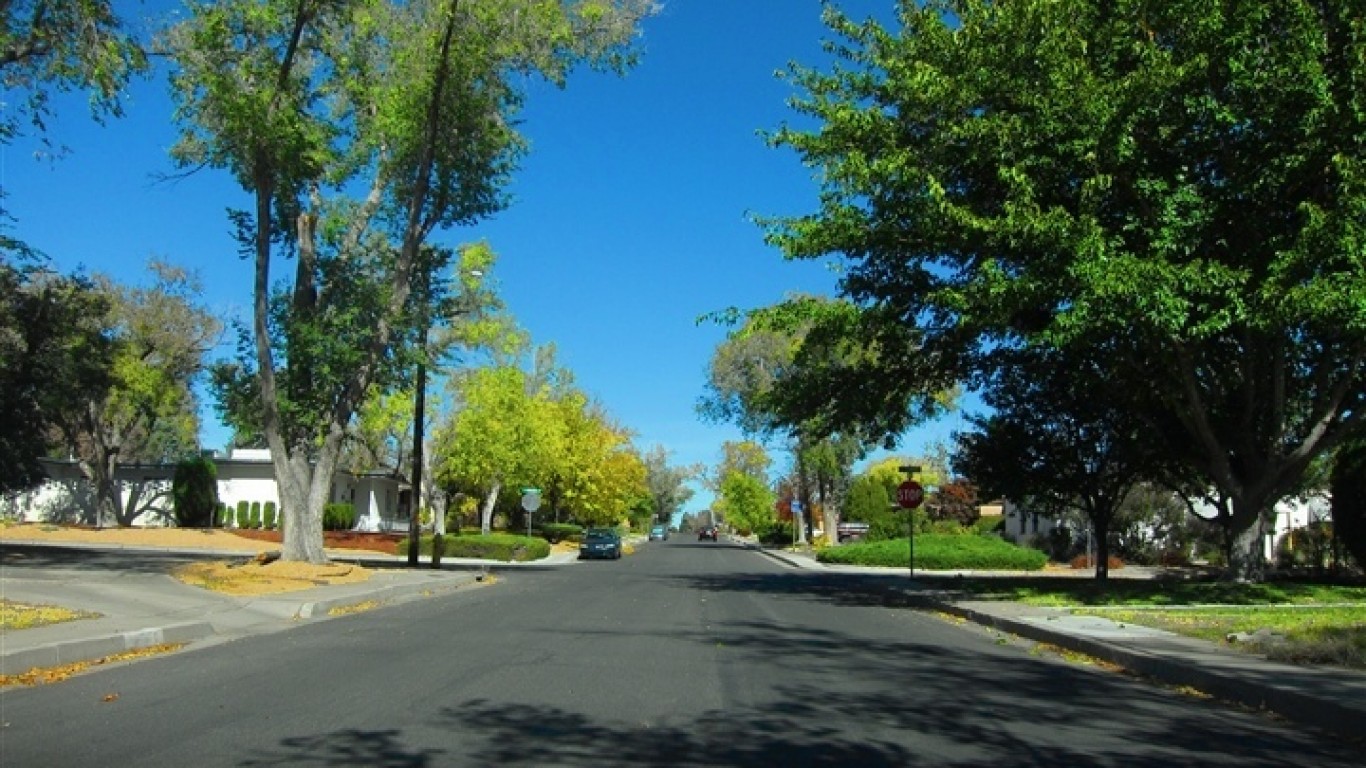
6. Bernalillo County, New Mexico
> New minimum wage: $9.05
> Effective date: 1/1/2019
> Former minimum wage: $8.85
The County Commission of New Mexico’s most populous county approved for a sixth consecutive year a minimum hourly wage cost-of-living adjustment.
[in-text-ad]

7. California
> New minimum wage: $12.00 (large empl.) $11.00 (small empl.)
> Effective date: 1/1/2019
> Former minimum wage: $11.00 (large empl.) $10.50 (small empl.)
California has mandated a statewide incremental increase to the minimum hourly wage. This year, all of the state’s employers with 26 or more workers will pay their minimum-wage workers $1.00 more per hour. Employers with 25 or fewer workers will pay an additional 50 cents.
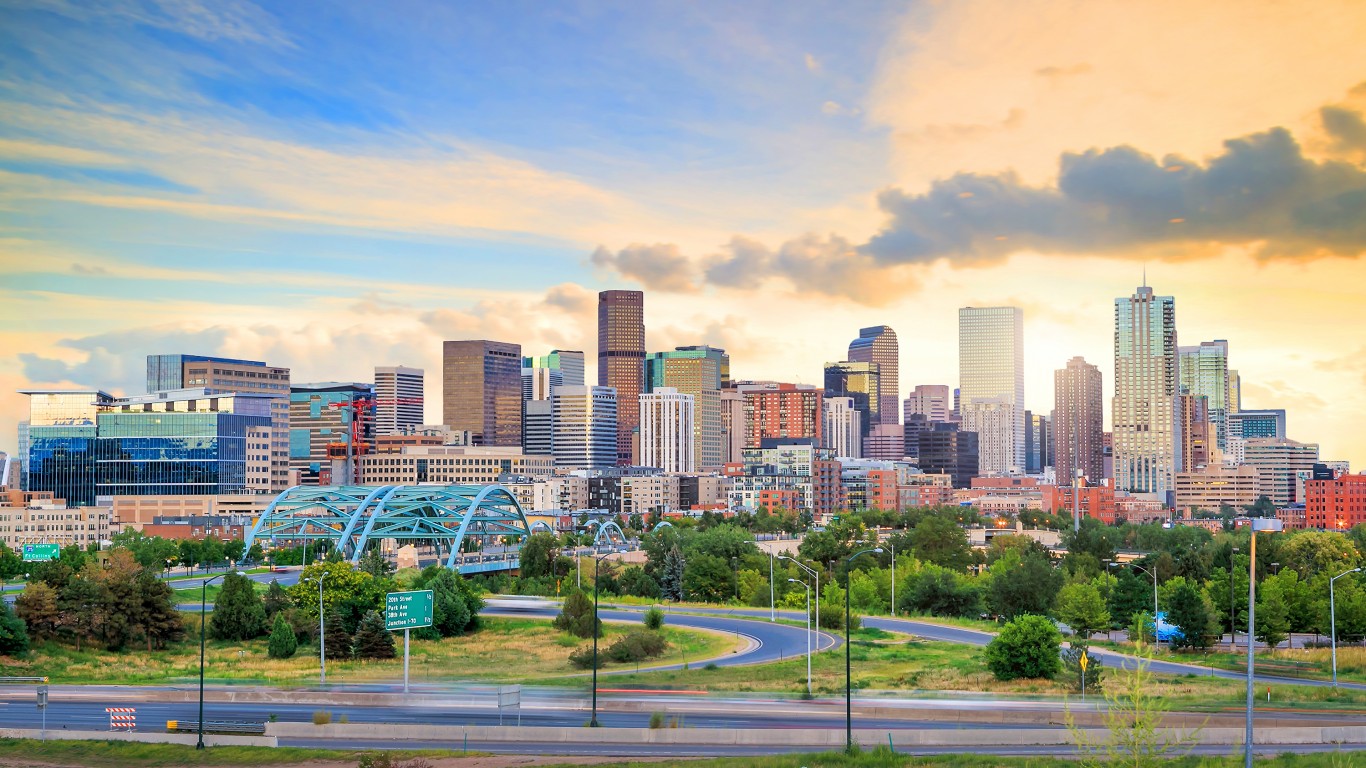
8. Colorado
> New minimum wage: $11.10
> Effective date: 1/1/2019
> Former minimum wage: $10.20
As part of a series of minimum hourly wage increases approved by voters in 2016, Colorado’s minimum wage increased by 90 cents at the start of the year. The state is aiming for $12 an hour by the start of next year.
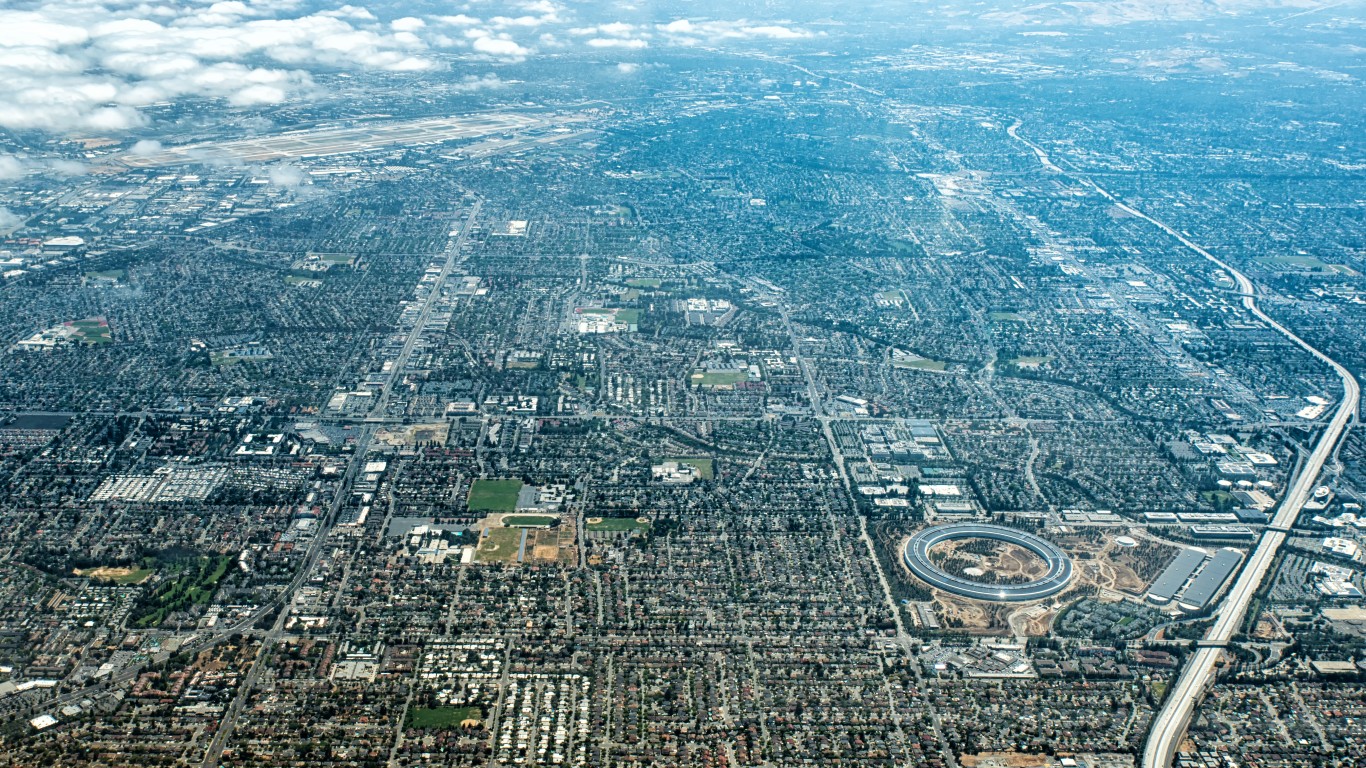
9. Cupertino, California
> New minimum wage: $15
> Effective date: 1/1/2019
> Former minimum wage: $13.50
Cupertino is one of 13 California cities raising their local minimum hourly wages this year. All of them, except for San Diego, are located in the San Francisco Bay Area, where low-income workers are struggling to afford housing near their workplaces.
[in-text-ad-2]

10. Delaware
> New minimum wage: $8.75 (January) $9.25 (October)
> Effective date: 1/1/2019
> Former minimum wage: $8.25
Delaware lawmakers passed a minimum wage hike bill last year that went into effect in two stages at the start of the year. The first of two 50 cent increases was enacted in January, and the second will go into effect in October. As a compromise with businesses, minors and probationary workers can be paid 50 cents less than the new minimum wage.

11. El Cerrito, California
> New minimum wage: $15
> Effective date: 1/1/2019
> Former minimum wage: $13.60
El Cerrito is one of 13 California cities that increased their hourly wage floors at the start of the year. The Bay Area city is also one of 10 of these California cities to hit their $15.00 an hour target.
[in-text-ad]
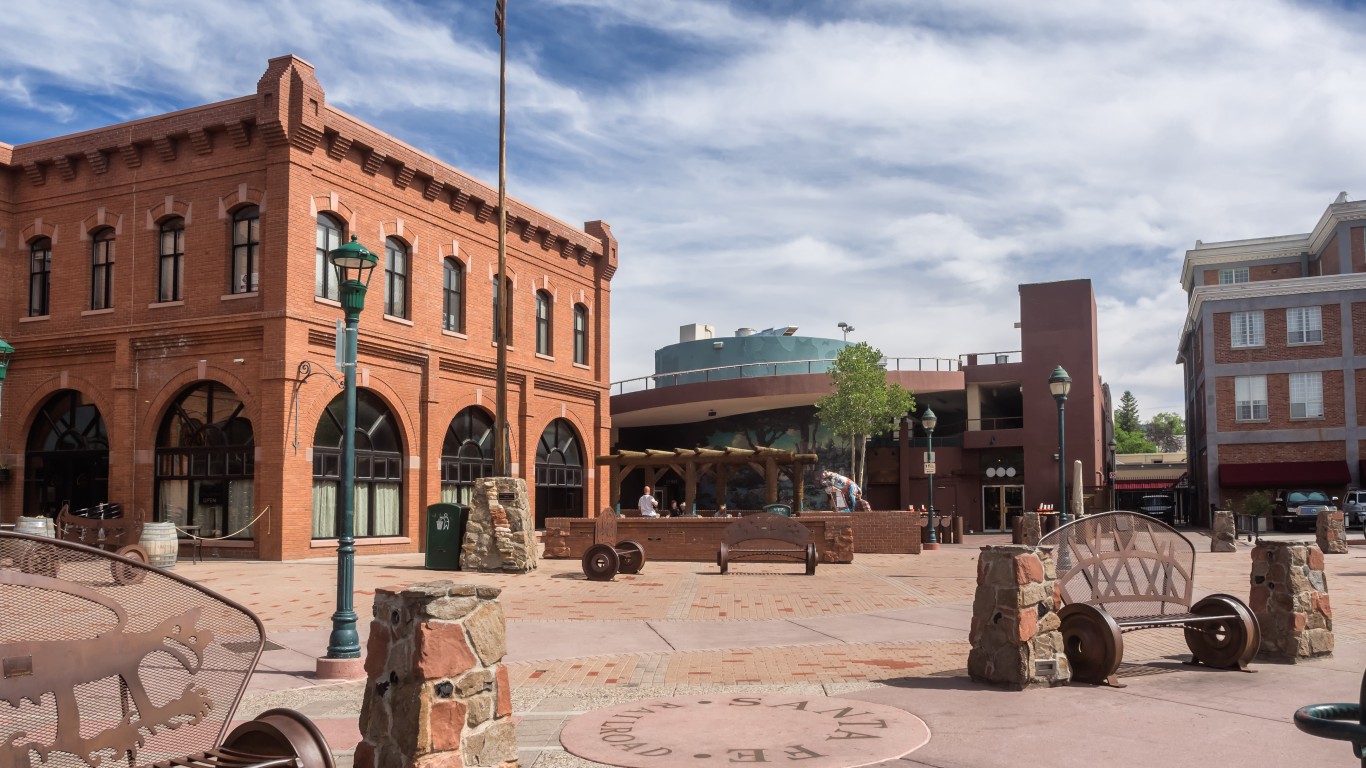
12. Flagstaff, Arizona
> New minimum wage: $12.00
> Effective date: 1/1/2019
> Former minimum wage: $11.00
Flagstaff is the only city in Arizona that raised its local minimum hourly wage at the start of the year. The increase is part of a 2016 ballot initiative to incrementally raise the hourly wage floor to $15.50 by 2022. A statewide minimum hourly wage also went into effect at the start of the year, to $11.00.
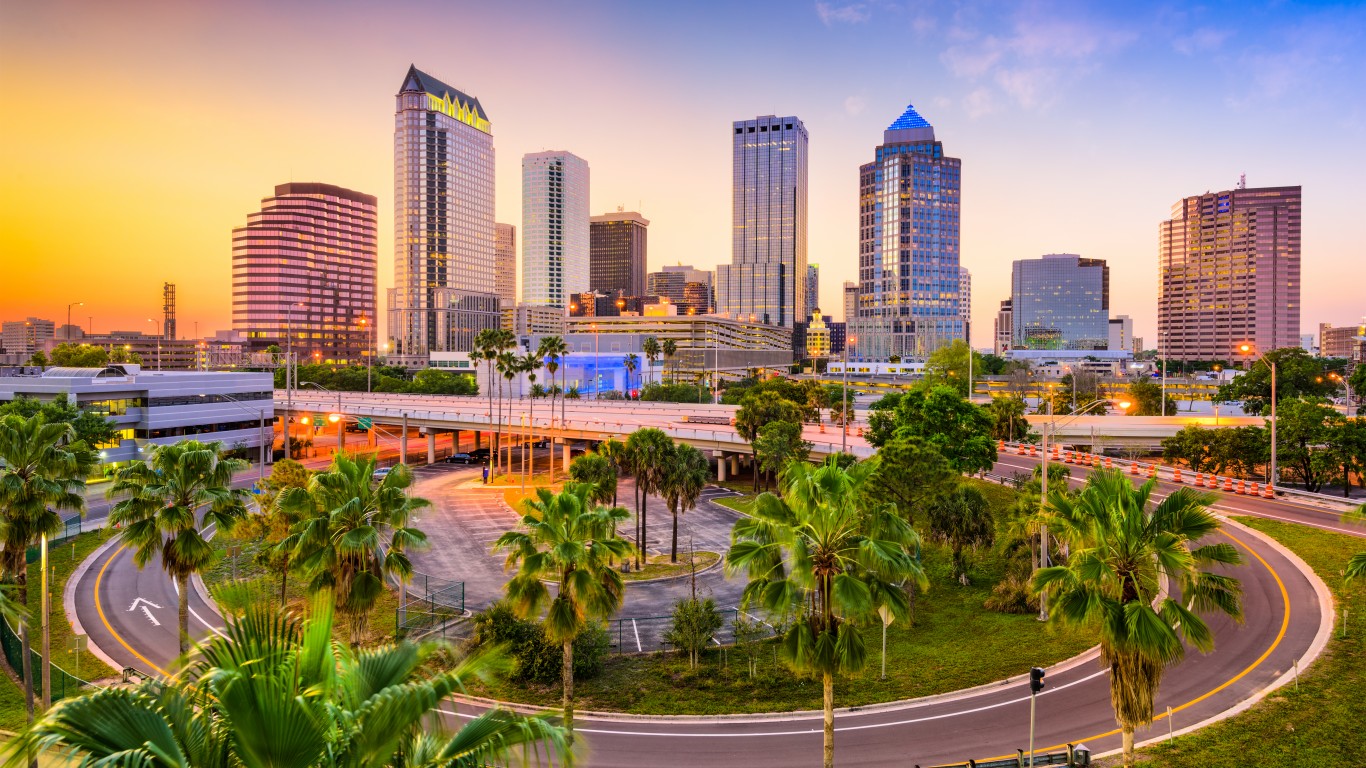
13. Florida
> New minimum wage: $8.46
> Effective date: 1/1/2019
> Former minimum wage: $8.25
Florida’s minimum hourly wage was adjusted for inflation at the beginning of the year with a 21 cent increase, the biggest increase in the state since 2012.
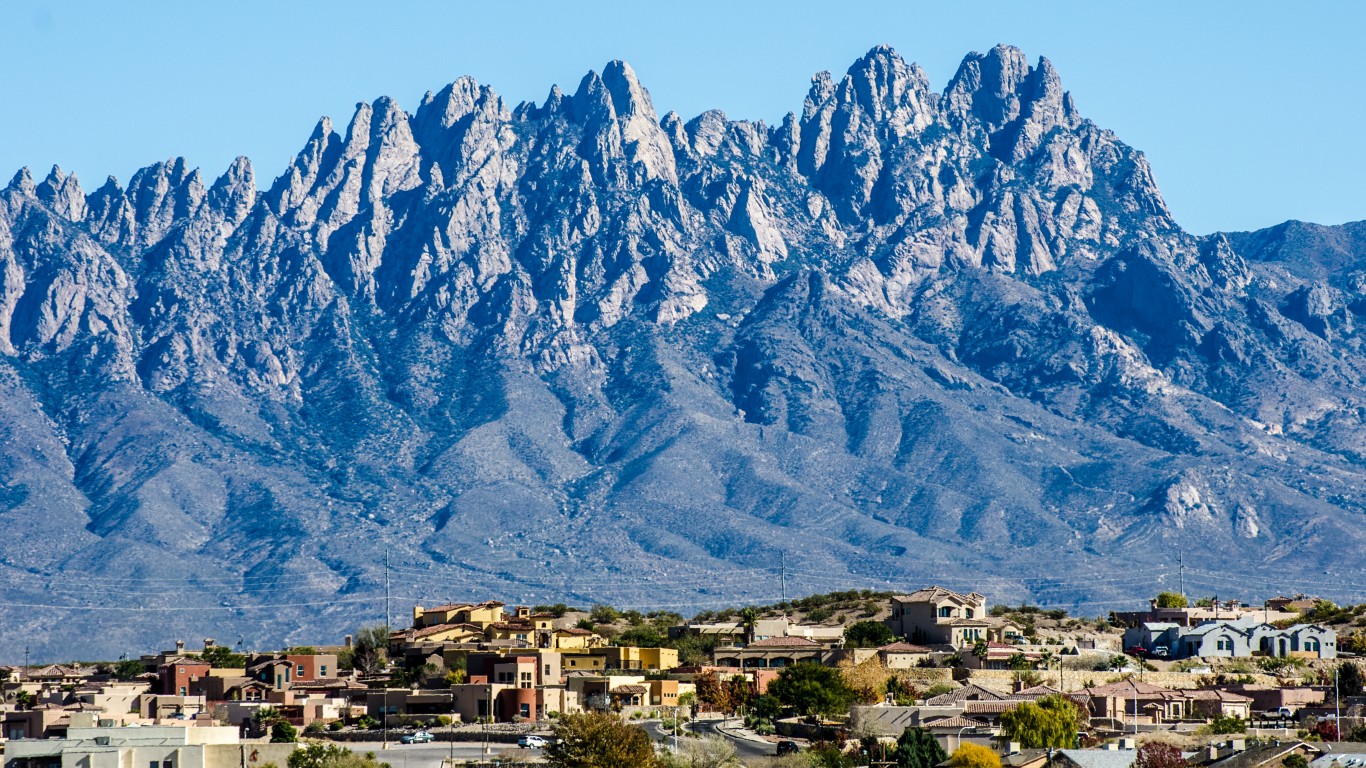
14. Las Cruces, New Mexico
> New minimum wage: $10.10
> Effective date: 1/1/2019
> Former minimum wage: $9.20
The city of Las Cruces is one of three cities or counties in New Mexico that raised their local minimum hourly wage at the start of the year. The city council approved a three-step increase to the minimum hourly wage in 2014. The final step was on Jan. 1, 2019, when the minimum wage climbed 90 cents.
[in-text-ad-2]

15. Los Altos, California
> New minimum wage: $15.00
> Effective date: 1/1/2019
> Former minimum wage: $13.50
A local ordinance passed in 2016 initiated three annual increases to the city’s minimum hourly wage, from $12.00 in 2017 to $15.00 starting Jan. 1. Los Alto is one of 12 San Francisco Bay Area cities that raised their minimum wage at the start of the year.

16. Maine
> New minimum wage: $11.00
> Effective date: 1/1/2019
> Former minimum wage: $10.00
Maine voters passed a referendum in 2016 to incrementally increase the statewide minimum hourly wage to $12.00 by 2020. The city of Portland could later this year further raise its minimum wage to adjust for rising cost of living.
[in-text-ad]
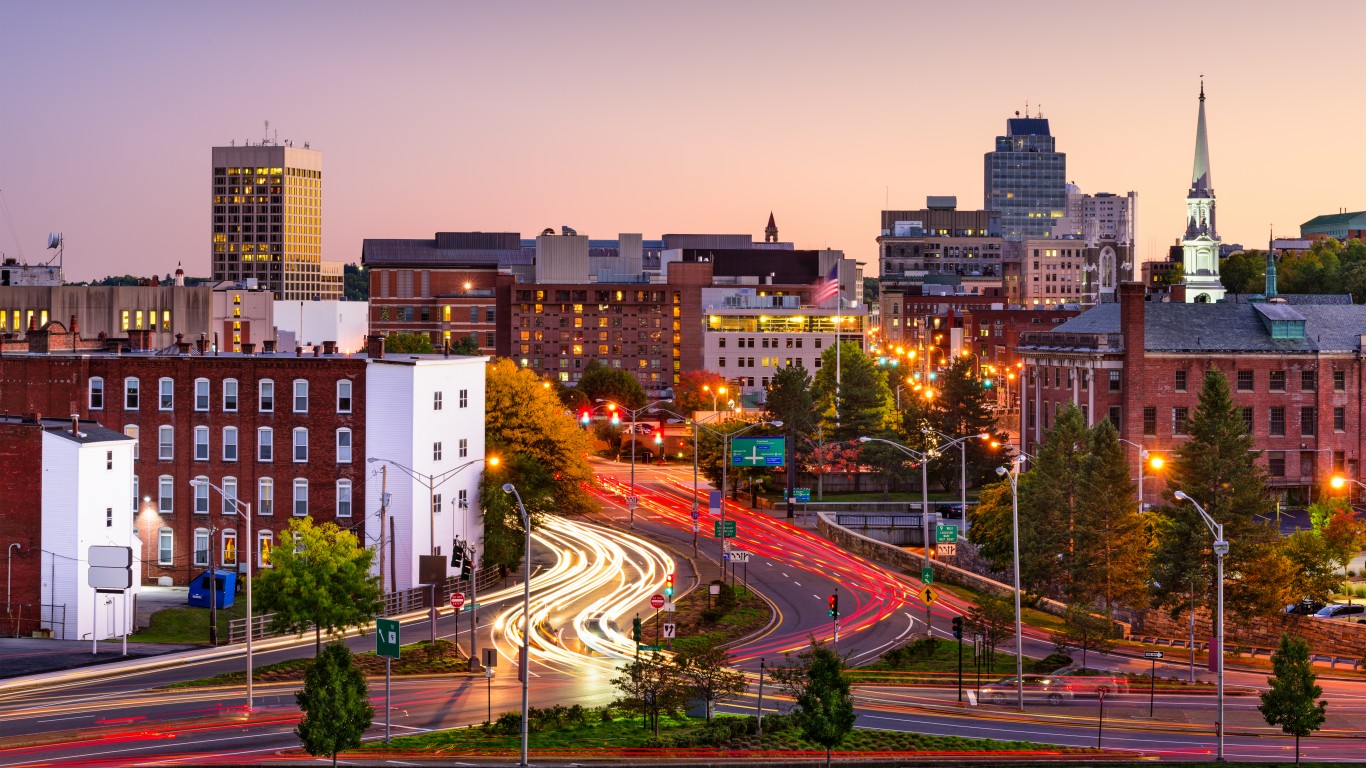
17. Massachusetts
> New minimum wage: $12.00
> Effective date: 1/1/2019
> Former minimum wage: $11.00
Massachusetts passed a law last summer to incrementally boost the minimum hourly wage to $15.00 by 2023. This year, minimum wage in the state climbed from $11.00 an hour to $12.00.

18. Minnesota
> New minimum wage: $9.86 (large empl.) $8.04 (small empl.)
> Effective date: 1/1/2019
> Former minimum wage: $9.65 (large empl.) $7.87 (small empl.)
In 2014, Minnesota lawmakers voted to approve three consecutive annual increases to the state’s minimum hourly wage, and to increase the wage with inflation annually starting in 2018. Employers with annual gross revenue of greater than $500,000 must pay a higher minimum wage.

19. Missouri
> New minimum wage: $8.60
> Effective date: 1/1/2019
> Former minimum wage: $7.85
Missouri voters approved last year a ballot initiative to raise the state’s minimum hourly wage by 85 cents per year until 2023, when the minimum wage would hit $12.00 per hour. After that, the wage will be indexed to inflation and be adjusted accordingly.
[in-text-ad-2]

20. Montana
> New minimum wage: $8.50
> Effective date: 1/1/2019
> Former minimum wage: $8.30
Since the passage of a ballot initiative in 2006, Montana has annually reviewed its statewide minimum hourly wage and adjusted it to account for increases in the cost of living based on a federal measure of the urban consumer price index. Montana raised its minimum wage by 20 cents on Jan. 1.

21. Mountain View, California
> New minimum wage: $15.65
> Effective date: 1/1/2019
> Former minimum wage: $15.00
Silicon Valley’s Mountain View joined nearby Sunnyvale in becoming the first two California cities to increase their minimum hourly wages to above $15.00. Both cities implemented ordinances to raise their minimum wage floors to $15.00 per hour last year, and to make annual cost-of-living adjustments starting in 2019.
[in-text-ad]
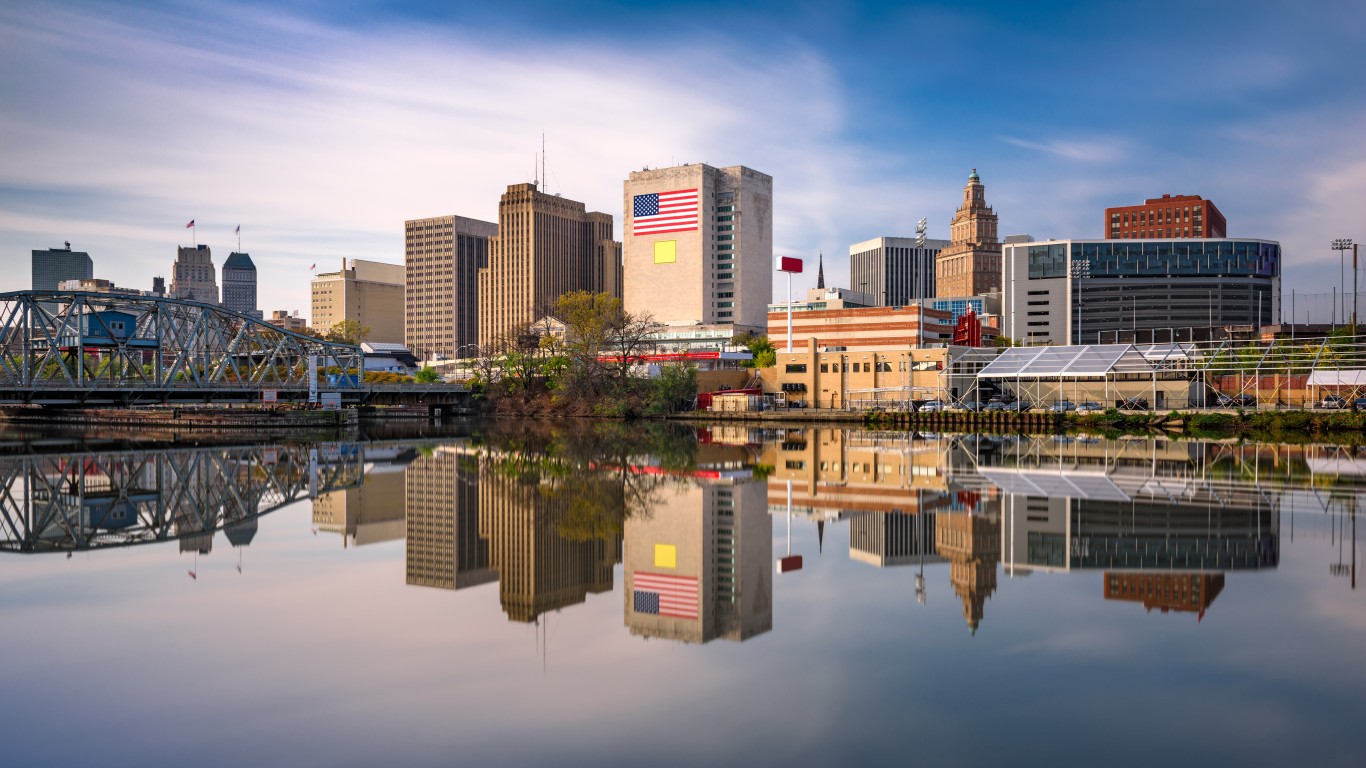
22. New Jersey
> New minimum wage: $8.85
> Effective date: 1/1/2019
> Former minimum wage: $8.60
New Jersey voters passed in 2013 a constitutional amendment requiring the state’s minimum hourly wage be assessed annually for a cost-of-living increase. But some are pushing for a bill to incrementally increase the hourly wage floor to $15.00 by as early as 2024 regardless of inflation.

23. New York City
> New minimum wage: $15.00 (large empl.) $13.50 (small empl.)
> Effective date: 12/31/2018
> Former minimum wage: $13.00 (large empl.) $12.00 (small empl.)
New York City’s minimum hourly wage started to increase in 2016 under a statewide wage law that is based on region. Small businesses in the Big Apple increased the minimum hourly wages to $13.50, while businesses with more than 10 employees will pay at least $15.00 an hour.
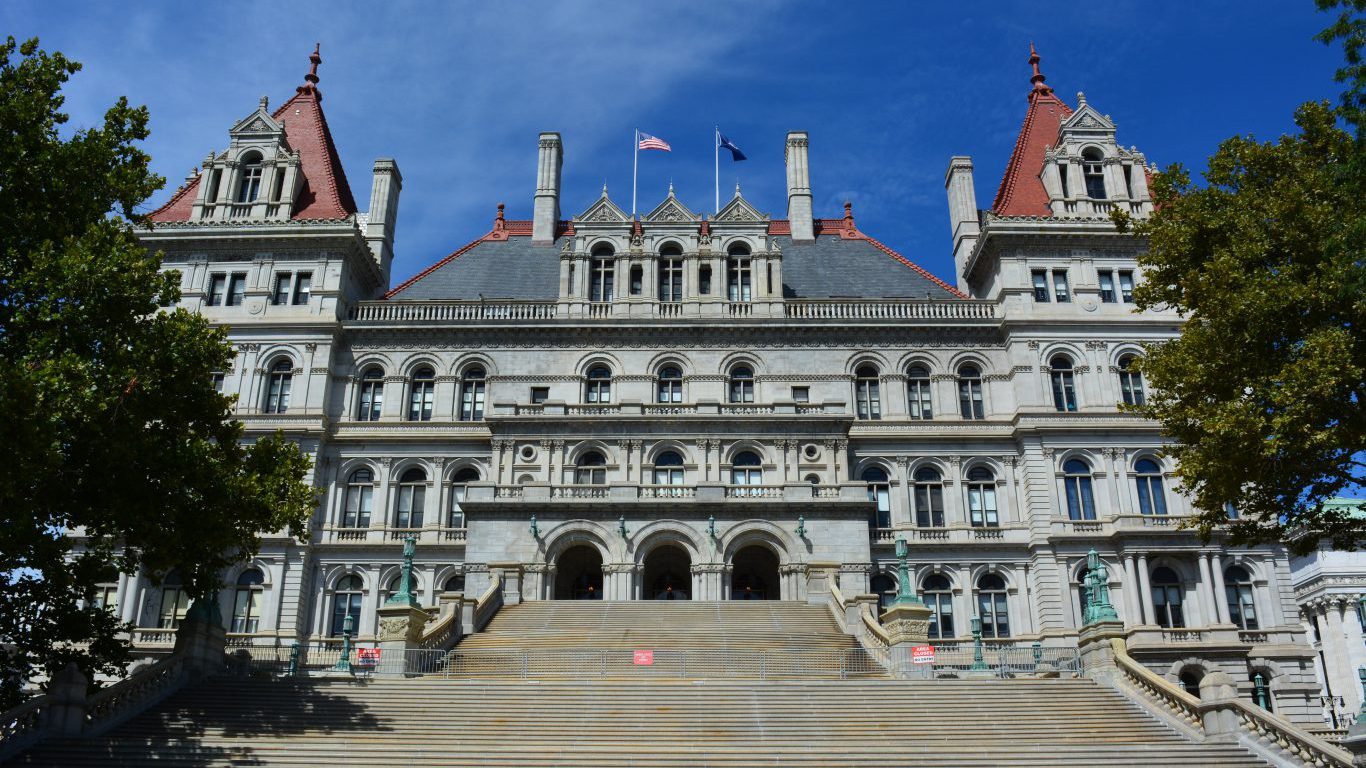
24. New York
> New minimum wage: $12.00 (Long Island + Westchester) $11.10 (Upstate)
> Effective date: 12/31/2018
> Former minimum wage: $11.00 (LI + WC); $10.40 (Upstate)
While New York City’s minimum hourly wage is the highest in the state, the rest of state implemented minimum wage hikes as well. The raise in upstate New York is the smallest, while the raise in NYC-adjacent Westchester County and Long Island experienced is larger.
[in-text-ad-2]

25. Oakland, California
> New minimum wage: $13.80
> Effective date: 1/1/2019
> Former minimum wage: $13.23
Oakland voters approved in 2014 a measure to index the city’s minimum hourly wage to inflation. But the measure has meant that Oakland’s minimum wage growth is actually lagging behind other nearby Bay Area cities that have raised their wage floors to at least $15.00 an hour.

26. Ohio
> New minimum wage: $8.55
> Effective date: 1/1/2019
> Former minimum wage: $8.30
Every year since voters approved a constitutional amendment in 2006, Ohio assesses and adjusts its minimum hourly wage to account for inflation. Every year since voters approved a constitutional amendment in 2006, Ohio assesses and adjusts its minimum hourly wage to account for inflation. This year, the minimum hourly wage was raised by 25 cents, from $8.30 to $8.55.
[in-text-ad]
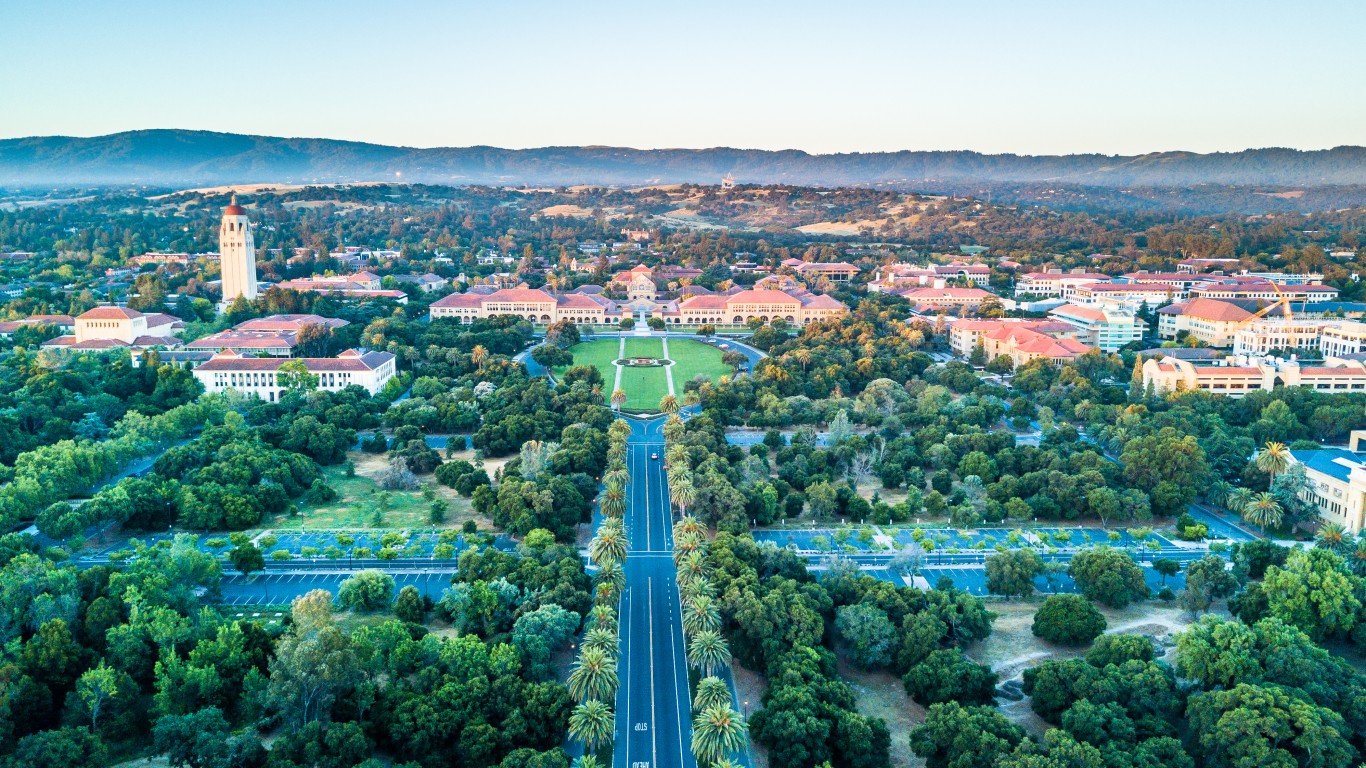
27. Palo Alto, California
> New minimum wage: $15.00
> Effective date: 1/1/2019
> Former minimum wage: $13.50
This Silicon Valley city passed an incremental minimum hourly wage increase in 2016 with a target of $15.00 by the start of this year. Palo Alto is one of several San Francisco Bay area cities that now have a minimum wage of $15.00 per hour or more.

28. Redwood, California
> New minimum wage: $13.50
> Effective date: 1/1/2019
> Former minimum wage: $11.00 (large empl.) $10.50 (small empl.)
California had the largest number of minimum hourly wage hikes to ring in the new year. Redwood is one of three Bay Area cities (including Oakland and Belmont) that are still marching toward a $15.00 per hour local minimum wage. Other nearby cities have already hit that target.

29. Rhode Island
> New minimum wage: $10.50
> Effective date: 1/1/2019
> Former minimum wage: $10.10
On Jan. 1, Rhode Island completed its two-step process to increase the statewide minimum hourly wage by 90 cents to implement a state law passed in 2017. Now, Democratic lawmakers in the state are pushing to enact legislation to gradually increase that wage to $15.00 an hour.
[in-text-ad-2]

30. Richmond, California
> New minimum wage: $15.00
> Effective date: 1/1/2019
> Former minimum wage: $13.41
Richmond joins several San Francisco Bay Area cities in hitting at the start of the year the $15.00 target for its local minimum hourly wage. Starting this year, the city will annually increase the minimum hourly wage based on inflation.
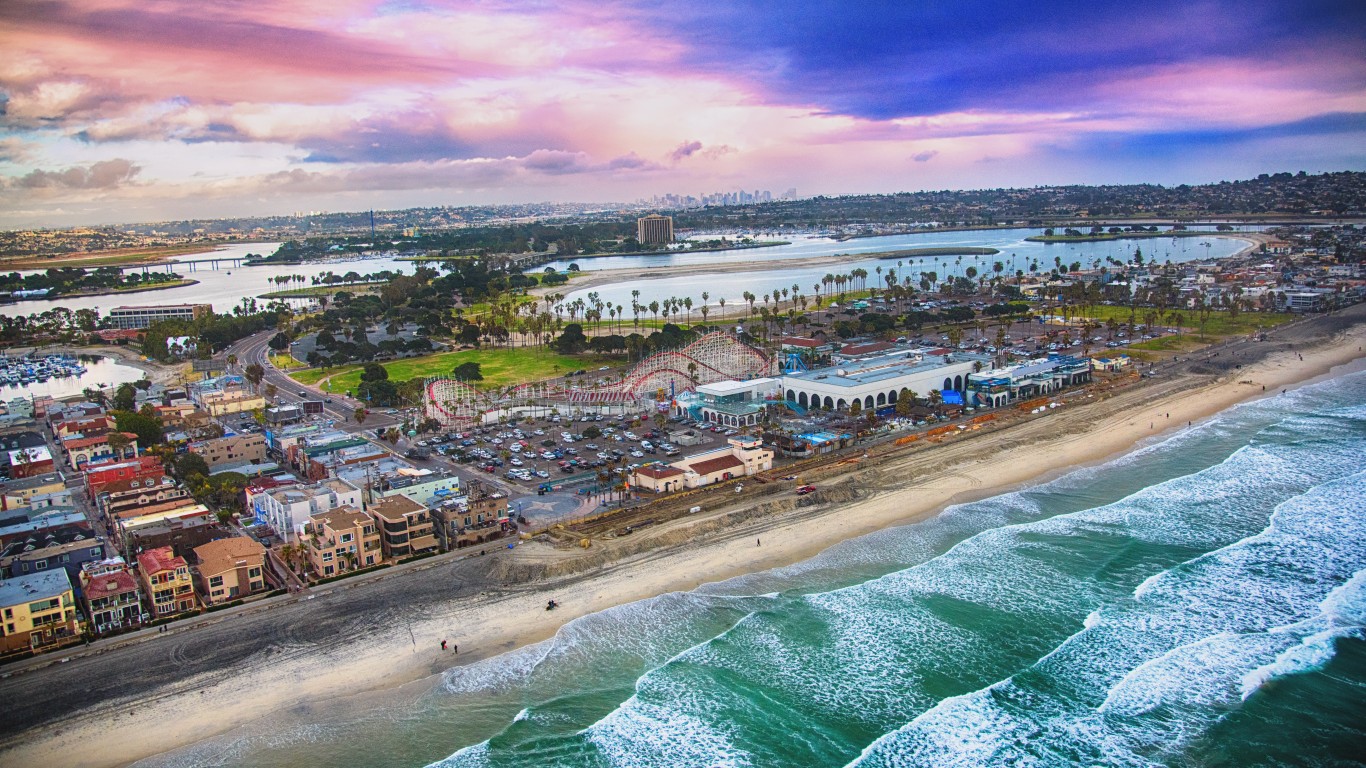
31. San Diego, California
> New minimum wage: $12.00
> Effective date: 1/1/2019
> Former minimum wage: $11.50
San Diego is the only California city outside of the San Francisco Bay Area to increase its local minimum hourly wage. On Jan. 1, California’s second most populous city completed its third and final incremental annual increase based on a city ordinance that was approved in 2016.
[in-text-ad]

32. San Jose, California
> New minimum wage: $15.00
> Effective date: 1/1/2019
> Former minimum wage: $13.50
San Jose’s city council approved in 2016 three consecutive annual minimum hourly wage increases, raising the wage floor up in $1.50 increments at the start of each year since. Moving forward, the city will index its minimum wage to inflation, and future annual increases will be capped at 5%.
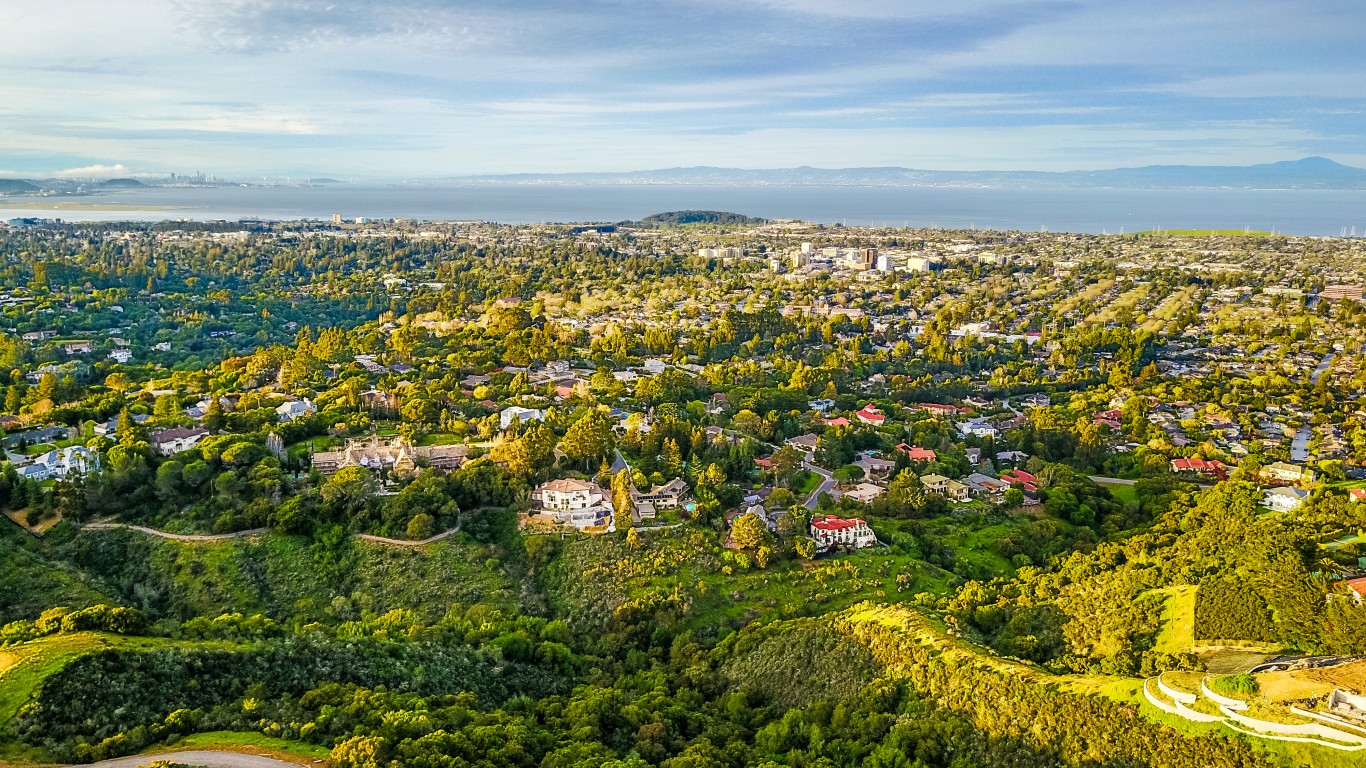
33. San Mateo, California
> New minimum wage: $15.00
> Effective date: 1/1/2019
> Former minimum wage: $13.50
San Mateo joined a dozen other Bay Area cities in raising its minimum wage at the start of the year. The city implemented its wage ordinance at the start of 2017, and incrementally raised the minimum wage to $15.00 an hour. Nonprofits are allowed to pay a lower rate of $13.50 per hour.
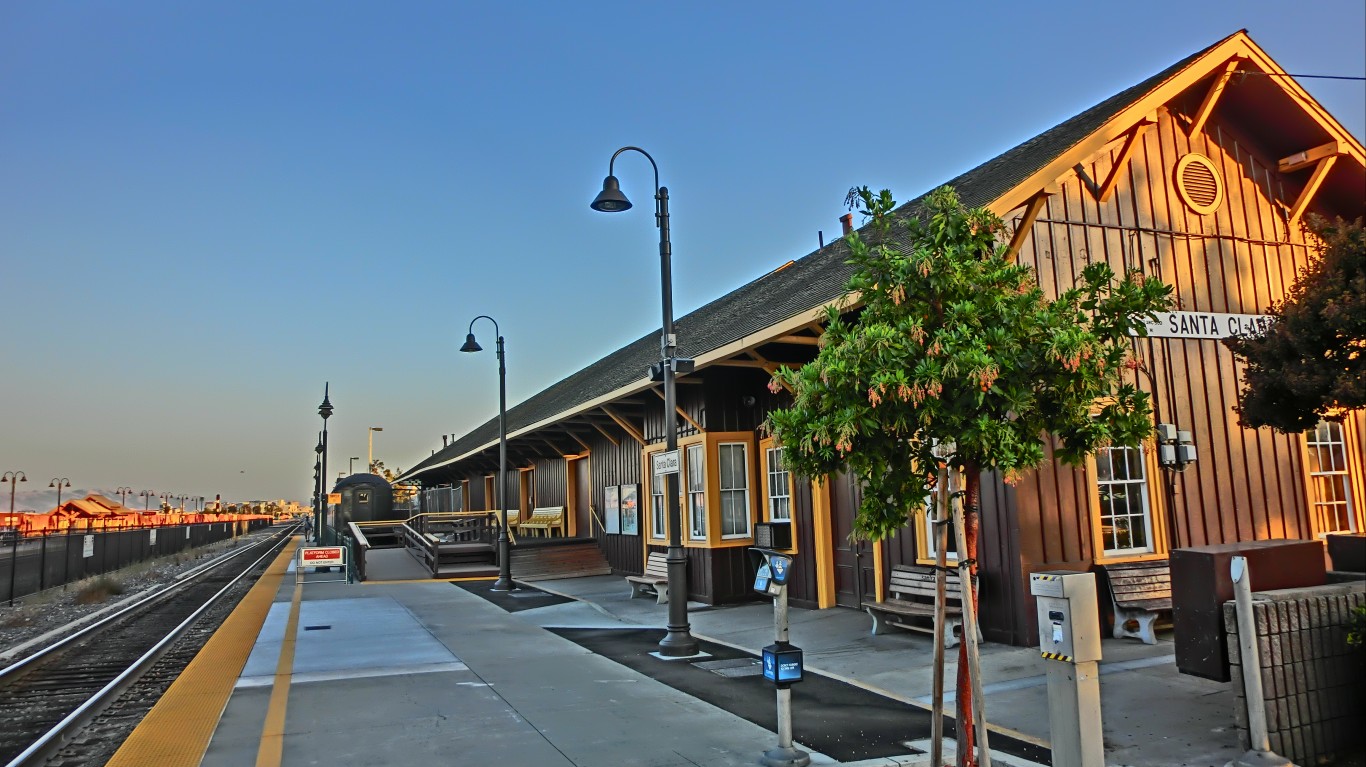
34. Santa Clara, California
> New minimum wage: $15.00
> Effective date: 1/1/2019
> Former minimum wage: $13.00
Santa Clara’s city council approved a plan in August 2017 to bump up the local minimum hourly wage in two annual increments to $15.00 by the start of 2019. As with other nearby Bay Area cities, Santa Clara will make cost-of-living adjustments to future minimum wage increases.
[in-text-ad-2]

35. SeaTac, Washington
> New minimum wage: $16.09
> Effective date: 1/1/2019
> Former minimum wage: $15.64
SeaTac, a tiny city of just 10 square miles surrounding the Seattle-Tacoma International Airport, just increased the minimum wage for 2019 to adjust for inflation. However, the law exempts some employers, most notably airlines.
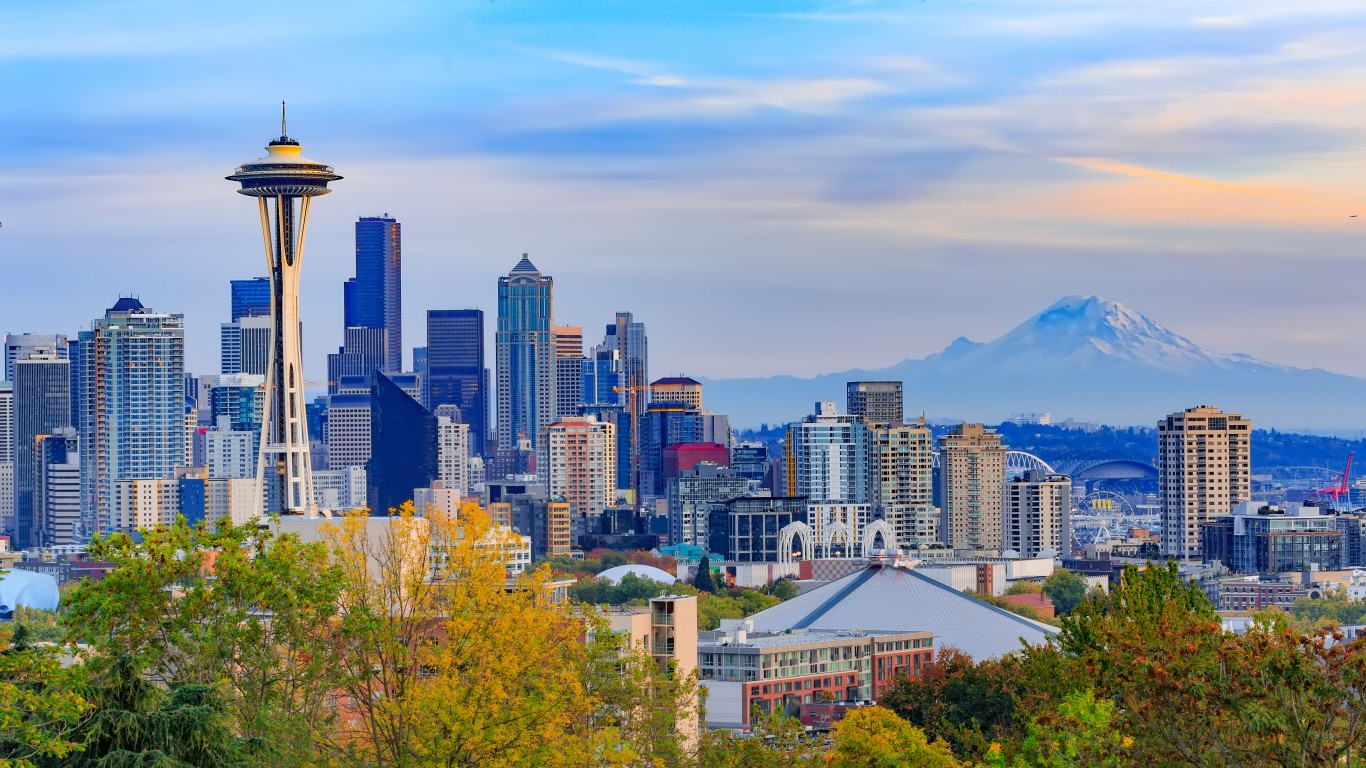
36. Seattle, Washington
> New minimum wage: $16.00 (large employers) $15.00 (small empl.)
> Effective date: 1/1/2019
> Former minimum wage: $15.45 (large employers) $14.00 (small empl.)
In one of the more complex minimum wage ordinances in the nation, Seattle has a three-tier minimum hourly wages. The hourly wage floor rose to $16.00 for employers with more than 500 employees; $15.00 for smaller businesses that do not offer workplace benefits; and $12.00 for those that contribute $3.00 per hour toward medical benefits.
[in-text-ad]

37. South Dakota
> New minimum wage: $9.10
> Effective date: 1/1/2019
> Former minimum wage: $8.85
A 2014 ballot initiative raised the minimum hourly wage in South Dakota to $8.50 from the federal level of $7.25. Every year since, South Dakota has annually adjusted the wage floor to cost-of-living increases. In 2017, voters rejected a measure to decrease the minimum wage for working minors.
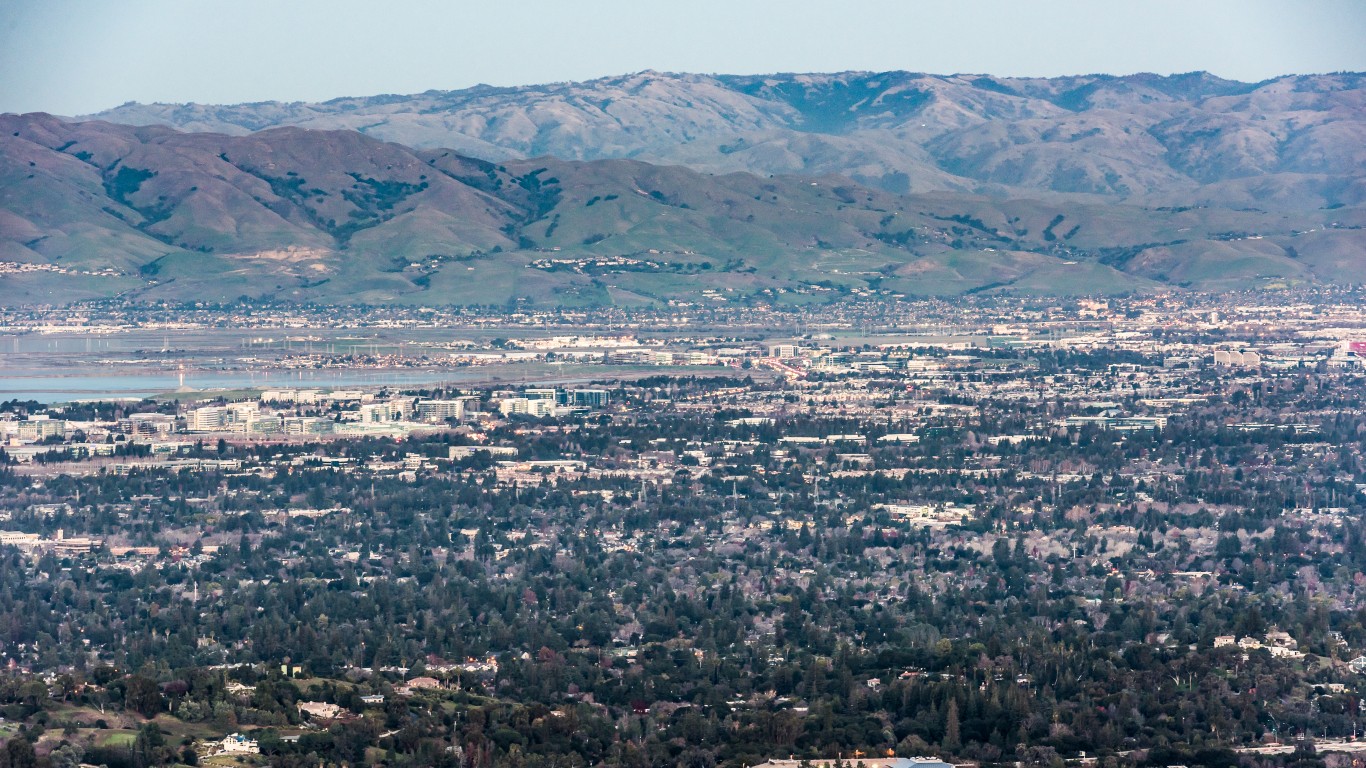
38. Sunnyvale, California
> New minimum wage: $15.65
> Effective date: 1/1/2019
> Former minimum wage: $15.00
Sunnyvale joins nearby Mountain View in having the Bay Area’s highest local minimum wage following a recent cost-of-living adjustment. The move comes after the city council approved in 2014 a measure to incrementally increase the wage to $15.00 an hour by the start of 2018, and to make annual adjustments based on inflation after that.
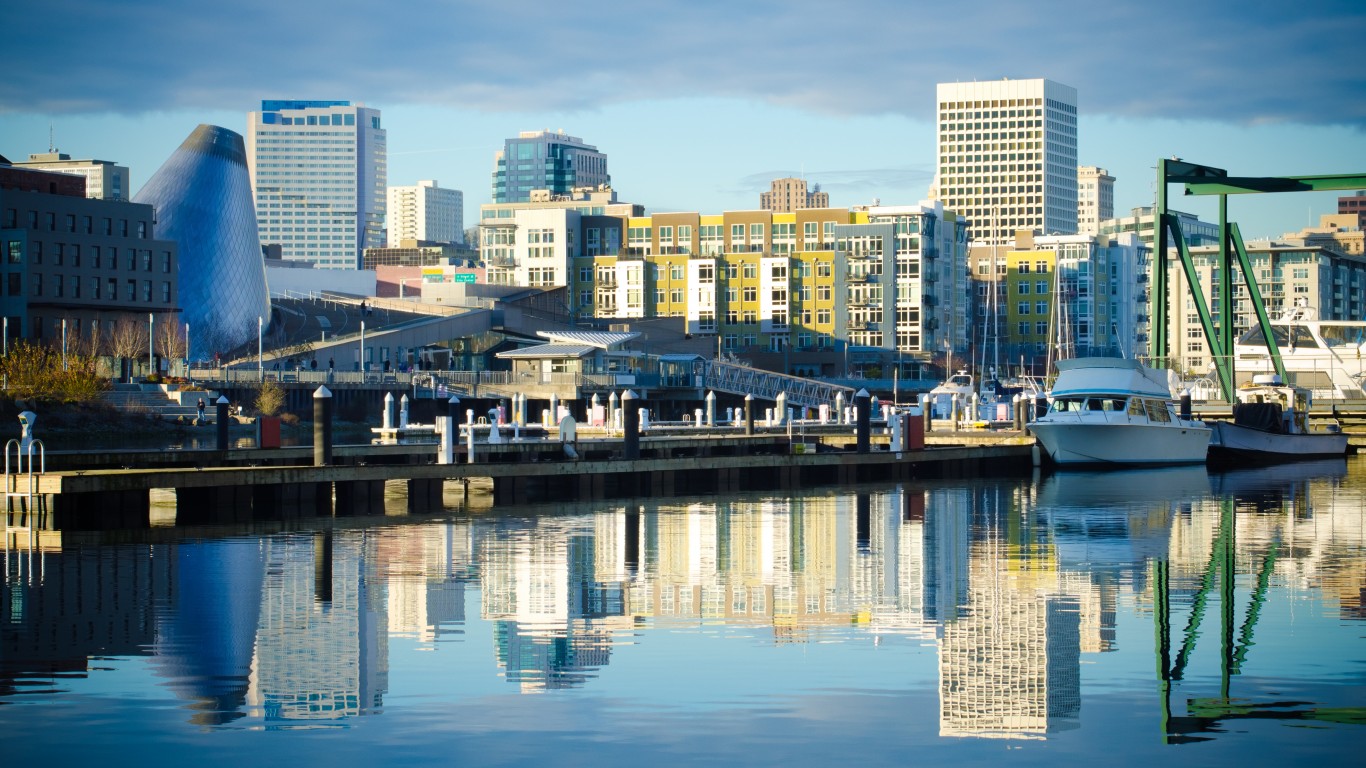
39. Tacoma, Washington
> New minimum wage: $12.35
> Effective date: 1/1/2019
> Former minimum wage: $12.00
In 2015, Tacoma voters approved a measure to incrementally increase the minimum hourly wage annually until it reached $12.35 by the beginning of 2019. Future increases will be adjusted annually based on the rate of inflation.
[in-text-ad-2]

40. Vermont
> New minimum wage: $10.78
> Effective date: 1/1/2019
> Former minimum wage: $10.50
Beginning this year, Vermont’s minimum hourly wage is indexed to inflation. Last year, Republican Gov. Phil Scott vetoed a bill to incrementally increase the minimum wage to $15.00 by 2024. He also rejected a paid family leave bill.
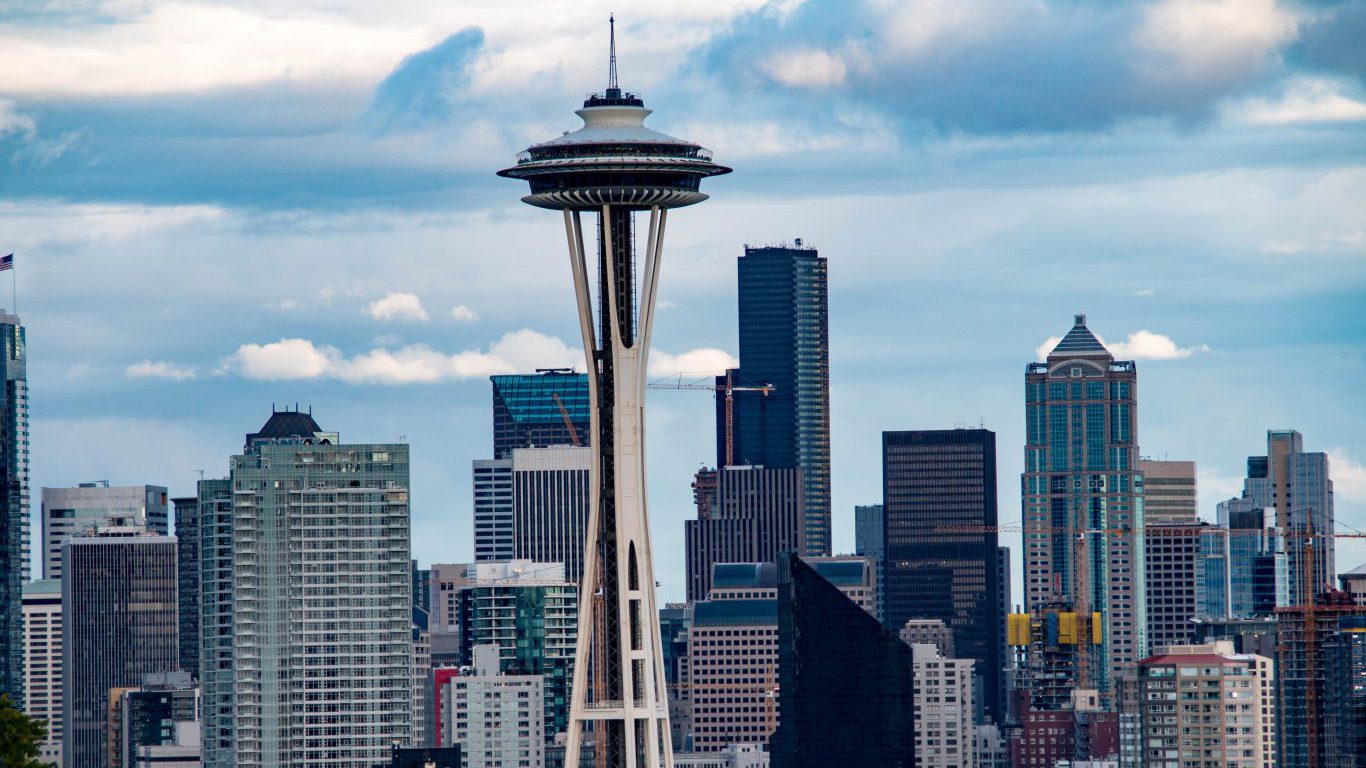
41. Washington
> New minimum wage: $12.00
> Effective date: 1/1/2019
> Former minimum wage: $11.50
Washington state voters approved in 2016 an incremental annual increase to the minimum hourly wage over three years, until the minimum wage reaches $13.50 at the start of 2020. The law also approved giving employees at least an hour of paid sick leave for every 40 hours worked.
Find a Qualified Financial Advisor (Sponsor)
Finding a qualified financial advisor doesn’t have to be hard. SmartAsset’s free tool matches you with up to 3 fiduciary financial advisors in your area in 5 minutes. Each advisor has been vetted by SmartAsset and is held to a fiduciary standard to act in your best interests. If you’re ready to be matched with local advisors that can help you achieve your financial goals, get started now.
Thank you for reading! Have some feedback for us?
Contact the 24/7 Wall St. editorial team.
 24/7 Wall St.
24/7 Wall St. 24/7 Wall St.
24/7 Wall St. 24/7 Wall St.
24/7 Wall St. 24/7 Wall St.
24/7 Wall St. 24/7 Wall St.
24/7 Wall St.

